Original compilation: Block unicorn
Original compilation: Block unicorn

The Internet has changed jobs.
At first, work was geographically restricted, you worked on a farm, in an office or in a factory, and with the internet you could work anywhere in the world.
Before long, we saw work shift from one-to-many (employee to employer) to many-to-many (gig economy). Technology platforms connect people for transportation, meal delivery, tutoring, dog walking, and pretty much everything else.
But all of this work is constrained by the legacy capital coordination system.
We don't have "internet-native jobs" because workers still have to rely on traditional banks and top-down organizations - even Web 2 apps that were supposed to liberate end up charging ridiculous take rates for their gig matching services.
Web3 is changing everything, Web3 reinvents the money system. In doing so, we create new and innovative ways to trade labor/value currencies with no central point of failure. We've only seen the world of the internet enabled work, and that's how encryption became mainstream.
Internet of Work (IoJ)It's what happens when web3 collides with the eternal labor-for-money in the digital realm. It creates a new and improved labor market that integrates value transfers as native features, making our relationship with labor peer-to-peer and reducing our reliance on central intermediaries with unilateral control. The purpose of this post is to shed light on the size and scope of the Internet of Work (IoJ).Summary
Summary
IoJ is about to happen.
IoJ will happen soon.
IoJ is how blockchain goes mainstream.
IoJ is an open design space.
first level title
IoJ is about to happen
My argument here is one of first principles:
1. The characteristics of the blockchain network endow tokens with "money".
2. One of the main uses of money is to buy labor or skills, commonly called "jobs".
3. Therefore, one of the use cases of blockchain will be the "Internet of Work".
IoJ is about to happen
ICOs, NFTs, and DeFi are all proven use cases for blockchain decentralization. They have created a multi-billion dollar market for their product, and the emerging industry around these 3 use cases has created a class of knowledge workers who are crypto-native and paid in crypto.
Many crypto projects choose to organize themselves as DAOs - Internet Native Organizations. As many crypto natives are adopted by these new digital organizations, DAOs are the catalyst for the Internet of Work.
secondary title
IoJ is how blockchain goes mainstream
The median Internet citizen thinks about their work, not their investments, when thinking about their financial lives and financial sovereignty. NFTs, yield farming, and meme (MEME) coins may be a great way to resonate with the crypto community, but it’s not enough for them to incorporate crypto into their everyday lives.
first level title
IoJ is an open design space
1. Construct design space
The Internet of Information enables computers to send information anywhere in the world. This fundamentally changes anything in society that relies on information (entertainment, media, politics, social media). The Internet of Finance enables computers to send value over computer networks. This could fundamentally change anything in society that relies on value transfers (banking, insurance, finance, art, jobs).
Of course, if you were trying to look into the future in 1997, it was hard to predict the rise of Google, Facebook, Twitter or the iPhone. But looking back, it feels obvious. The use case for the Internet of Work is similar. Looking ahead to 2021, it is difficult to predict exactly what the breakthrough use cases will be.
2. Some IoJ tools will be skeuomorphic
image description
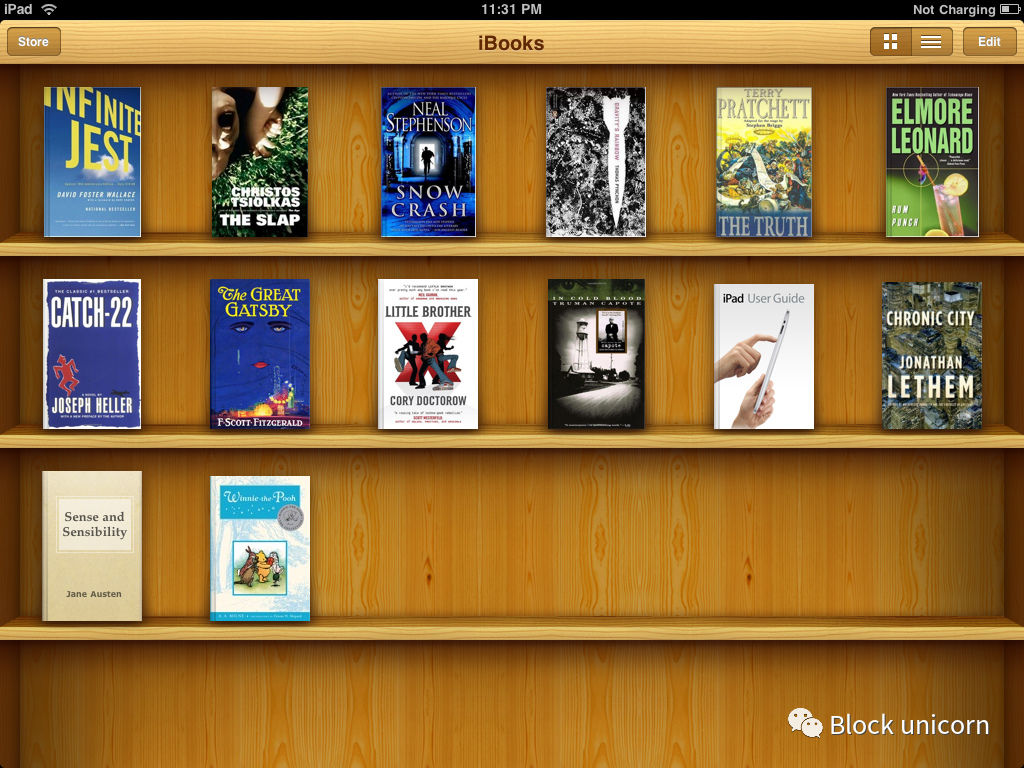
The first version of iBooks looked like this. Why do we need a digital book shelf? Skeuomorphism. Skeuomorphic design connects us to the future, but never in its final form.
For example, when the Internet came along, Yahoo and Google both had the same mission: organize the world's information. What's the difference?
1. Yahoo just put the library card catalog system online (a skeuomorphic problem-solving approach).
2. Google invented a new way of traversing information in the search bar (a non-skeuomorphic way of solving problems).
The lesson here is that much of the value unlocked by the IoJ will deliver value in entirely new, non-skeuomorphic use cases in ways that are compelling and novel in their own right. IoJ-era examples of skeuomorphic and non-skeuomorphic mechanisms:
1. LinkedIn is an example of a skeuomorphic use case where they just put resumes online.
2. Quadratic Funding is an example of a de-skeuomorphic way of funding talent — it didn’t (and couldn’t) exist before.
3. The IoJ is not the gig economy
A common misconception is that the IoJ will resemble the gig economy. Indeed, gig sites like UpWork, Fiver, Uber, etc. have been a hallmark of the web2 market.
But they're limited because they've been baked into the old financial system + the old internet. If Ethereum does not provide easy tools to make these markets transparent, immutable, global, or community-governed, the design space is more limited.
We now have Ethereum, so we can build one more IoJ:
1.Global, which means you can participate from anywhere.
2. Immutable, which means your assets cannot be seized.
3. Transparency, which means no more information asymmetry.
4. Governance by the community to create more consistent incentives.
5. Efficient because the middle man has been replaced by smart contracts.
The IoJ is more than the gig economy, the gig economy is part of the IoJ, but they are only part of the design space.
4. Many important properties will be split out from our legacy employment infrastructure and rebundled into the IoJ
Employment infrastructure in most parts of the world has a number of important benefits:
1. Insurance
2. Health care
3. to retire
4. Protection from Discrimination or Other Abuse
There are other important properties built into the world employment infrastructure:
1. Taxation
2. Compliance
3. Equal opportunity
These attributes will be bundled back into the IoJ. Each of these attributes is important enough to merit publication. An early example of this is Opolis job sharing, a tool that incorporates many of the benefits of the traditional world (insurance, healthcare, etc.) into the IoJ.
As the IoJ evolves, new infrastructure to handle these properties will emerge. As the infrastructure emerges, more people will work in the IoJ, creating a positive feedback loop.
5. Clarification of the IoJ value function
Let's get to the fun part: designing mechanics for the IoJ native world. Here are the common features of how all Job Internet Age projects work:
token release = f(time, material, skill, job output, ... other signals)
award
award
An example in the crypto ecosystem is rewards:
Gitcoin Rewards
Ethereum bounty
BanklessDAO rewards
Rewards are a common primitive in the crypto ecosystem. Gitcoin Rewards itself has been used over 8,500 times on Gitcoin to transfer over $5.55 million in tokens.
first level title
grant
Grants are another commonly used crowdfunding mechanism. Many Web3 projects have their own funding programs as a way of compensating startup teams for building their protocols.
Gitcoin Grants matches donations to your favorite projects with funds from a pool maintained by GitcoinDAO. Gitcoin Grants has distributed $25 to hundreds of projects and has seen over 2 million lifetime donations.
first level title
coordinate
Coordination is another unique tool that is often used to reward tokens for work done. Unlike Grants and Bounties, which typically compensate discrete packages of work, tools like Coordinape determine your worth and assign you fair tokens based on what your industry pays for jobs.
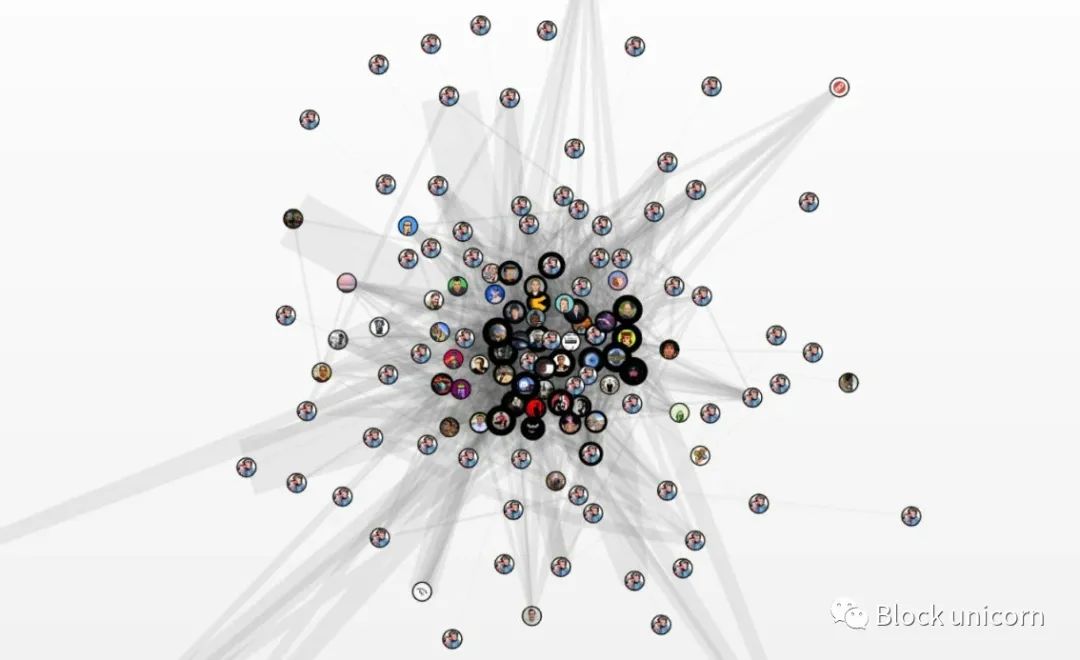
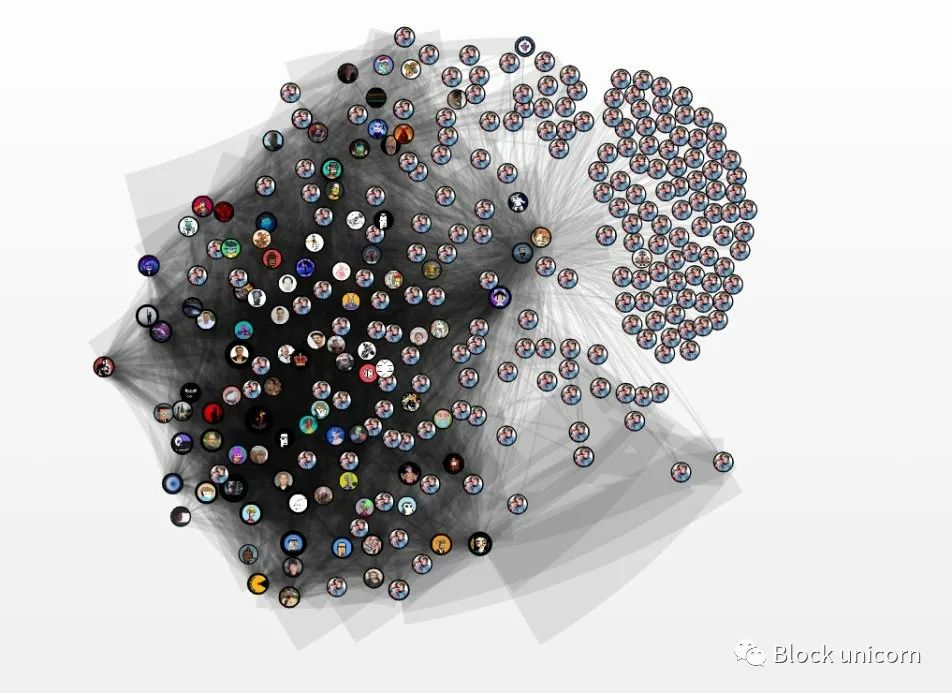
Additionally, Coordinape is a peer-to-peer compensation tool that allows the community to participate in the act of giving and receiving, rather than being dictated by a centralized corporation or central authority. This turns compensation into a community-building exercise.
6. The IoJ will have many different impacts, not just money
Of course, it would be foolish to think that you can boil all this down to money. There are many other implications for human welfare, which we will also explore. So really, the IoJ formula is more than just:
token release = f(time, material, skill, output, other signal)
Taking these factors into account, we can reformulate the formula as:
token release + reputation + learning + impact = f(time, material, skill, output, other signals)
It is no exaggeration to say that this is a multi-dimensional design space. There are many possibilities here. So how should we explore? What pitfalls should we avoid? Well... we should start by exploring mechanics that fit our values.
7. What are our values?
Blockchain provides the ability to create smart contracts. In these smart contracts, we can literally program our value into our money. So what are our values?
This deserves its own post. What is the relationship between capital and labor? How does supply and demand come together? How do we measure success? How to balance short-term and long-term incentives? Where do social safety nets apply? Where can we further align incentives? There is complex political theory and economic history to analyze, and we have first-principles demonstrations that are superficial. (If you want me to write a post about this, send me a tweet and let me know.)
Having said that, I will offer my thoughts on "What are our values?" Note that this is my personal opinion, subject to change.
My current personal opinion is that the true end of the IoJ is to build a world enriched in each of the eight separate circuits of human consciousness for as many people as possible for as long as possible.

When you stack web3-native mechanisms on top of the eight consciousness loops, you start to get:

Further nuance is required when you consider that every transaction on the work internet involves multiple people.
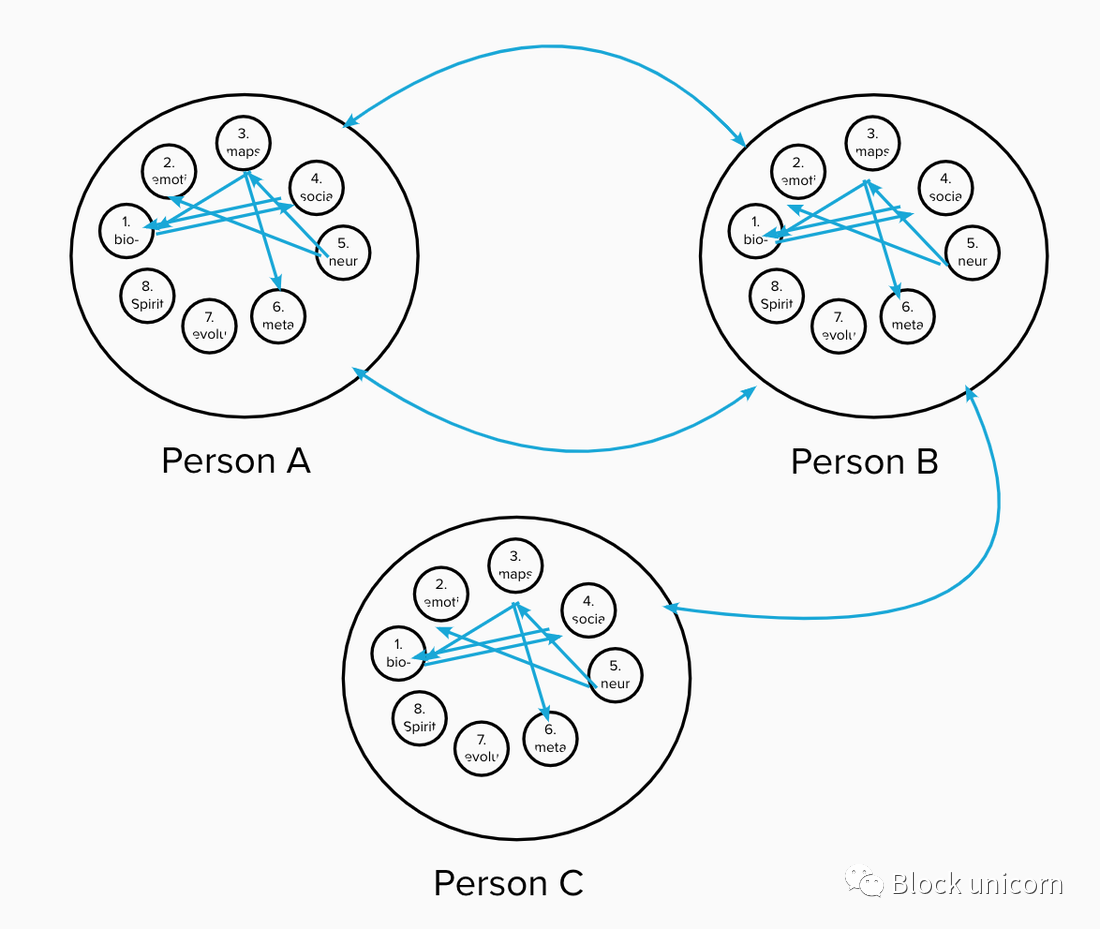
I think an important design criterion is that people should be able to:
1. Mutual benefit.
2. Benefit in proportion to the value they each provide.
3. Can choose to get out of any of these relationships.
It's not just theoretical, it's already happening, here's a slice of the Gitcoin contributors chart:
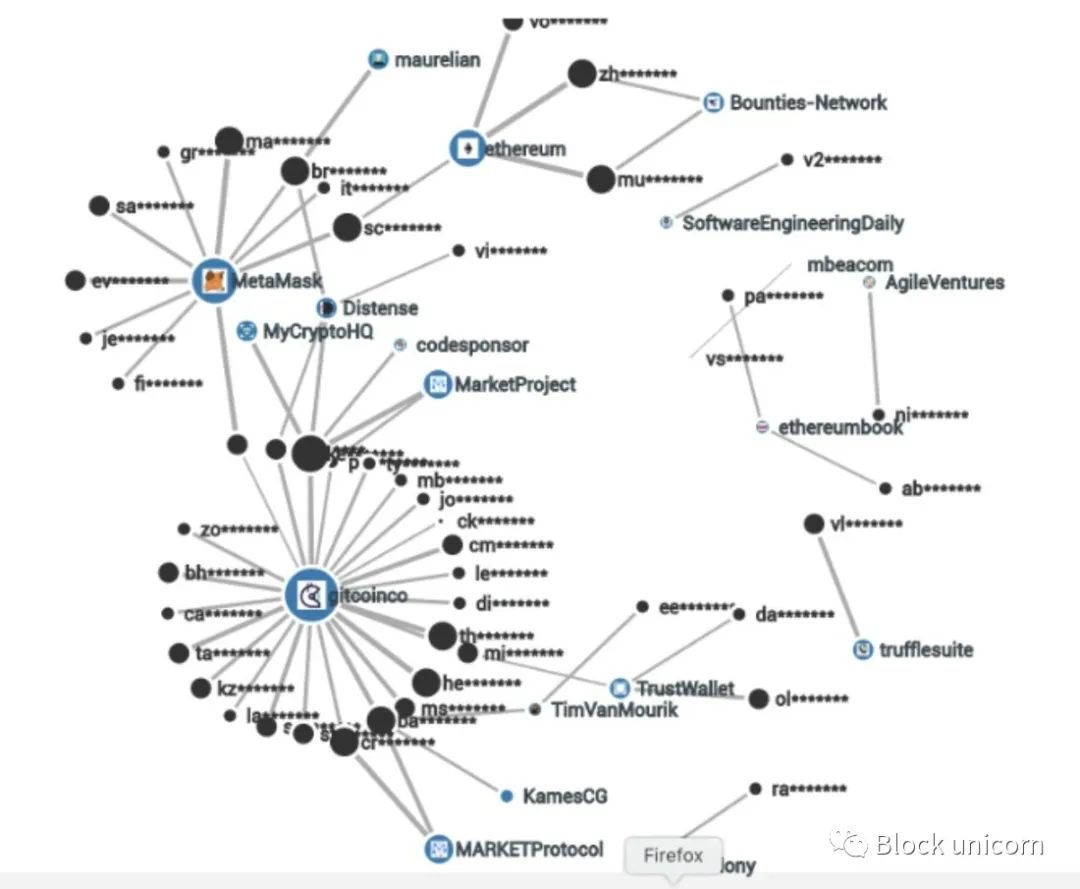
first level title
Will the IoJ create human prosperity?
I would like to believe that we are designing a regenerative internet of value for the prosperity of global citizens, a collection of 3 dimensional human beings, each with different values, ambitions, backgrounds, geography, psychological orientation, financial endowments, privilege levels, abilities, and physical prototypes. We celebrate our diversity, but also recognize our shared human needs to live in healthy ecosystems, achieve economic empowerment, and maintain individual sovereignty.
I would like to believe that. Maybe if others want too, we can agree on that North Star and build it together.
IoJ has happened
The working internet is already up and running, here is the list of working product internets that I know of:
SourceCred: A tool to measure consensus among subjects that create value in a community + create token rewards for them.
Radicle: A web tool for OSS developers to earn tokens.
Opolis: Employment commons dealing with public welfare + regulatory tasks.
Coordinape: A tool to measure consensus among subjects that create value in a community + create token rewards for them.
OpenSea: An NFT marketplace where artists can sell their creations.
ETHGlobal: Hackathon provider; earn tokens for completing coding tasks or starting something new.
Gitcoin Grants: Crowdfunding + matching tool based on secondary financing.
Gitcoin KERNEL: A web3 university.
Gitcoin Hackathons: Hackathon provider; earn tokens for completing coding tasks or starting something new.
Coordination Party Kit 7: Gitcoin is developing a toolkit for employment in the era of DAOs.
Reward Board: A tool for assigning rewards to discrete tasks.
Some of these tools are skeuomorphic, while others are fundamental and entirely new constructs for the Internet of Money era.